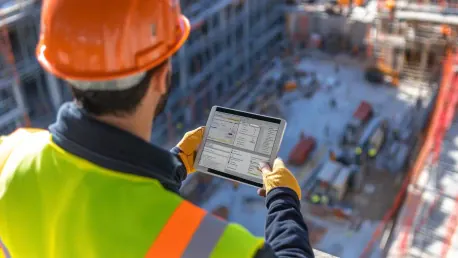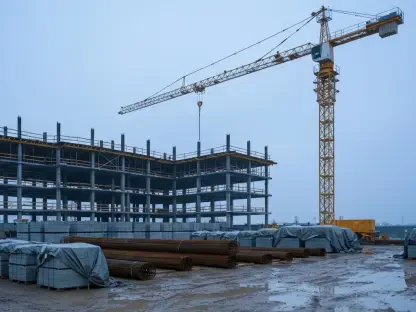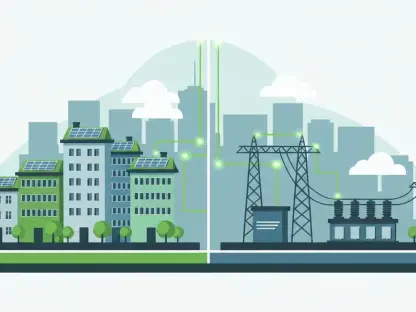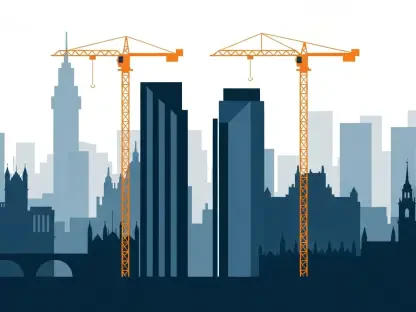It is high time we learned the specifics of OSHA’s standards in construction. Created in 1970, this agency focuses on eliminating hazards and promoting workplace safety and health by formulating and implementing guidelines and offering training, counseling, and educational services.
The agency oversees most private-sector enterprises and some under the federal jurisdiction of the fifty states. Its rules are grouped descriptively by general sectors, such as maritime, agriculture, and this article’s topic: construction.
Construction standards are subtly adapted to fit the fluctuating context of worksites, the temporal character of tasks, and the bulk processes taking place behind the scenes. Read on to learn more about how OSHA guides the industry and what protocols to undertake to improve your operations if you are one of the players in the field.
Construction vs. General Industry Guidelines
Overall, the agency tries to implement consistent standards across all sectors of the American workforce. However, some situations are highly specific to certain industries, such as those surrounding bathrooms in unique fields. For instance, standard sanitation may not be feasible for agricultural workers during harvest, leading to the need for industry-specific facilities.
Similarly, working at sea comes with its own set of logistical challenges. Lastly, due to its hazards, temporary work sites, and the prevalence of small to medium-sized businesses as employers, the construction sector needs clear-cut rules. Here is the main difference between these two sets of regulations:
The Construction OSHA, also known as 29 CFR 1926, focuses on safely building stairways and ladders, fall protection provisions, and methods of installing electrical wires.
The General Industry OSHA, or 29 CFR 1910, is usually referred to as and covers manufacturing companies, service industries, and healthcare. It regulates the less variable hazards and sets quality levels for stationary workplaces where the work activities are not very dynamic.
How to Read the OSHA 29 CFR 1926
The General Safety and Health Provisions (29 CFR 1926 Subpart C) set the foundation for safety measures at construction sites. It covers these key areas to ensure worker safety:
Quality and safety protocols
Confined space regulations
Personal protective equipment (PPE)
Hazardous materials handling
Accident preventing measures
The OSHA 29 CFR 1926 requires employers to provide safety training, notify the relevant parties about safety issues, and ensure access to medical services and first aid. Fire protection is also necessary. Workers should also use Personal Protective Equipment (PPE) to stay safe from potential risks.
The Occupational Safety and Health Administration’s 29 CFR 1926 covers different safety aspects, such as scaffolding (Subpart L) and fall protection (Subpart M). To use these measles effectively, it’s important to check the table of contents and index carefully. Here are the eight fundamental areas of focus of this rulebook:
8 Key Areas of Focus for Construction Safety Compliance
Here are the eight main industry-particular safety standards employers should take into consideration:
Fall Protection
Falling is one of the leading causes of serious accidents and deaths worldwide. To prevent injuries and life-threatening incidents, rules help employees and companies understand what protection is needed, and when. For example, when working more than six feet above a lower level, employers should effectively apply structures like guardrails and safety nets to make sure nobody gets hurt.
Scaffolding
Scaffolds are platforms that help builders perform tasks and hold materials at higher altitudes. The 29 CFR 1926 Subpart L specifies guidelines for designing, building, and using scaffolding to ensure stability and safety. They are important because altitude-related accidents can happen due to structural failure, falls, or objects falling on people from these structures.
Excavations
When digging trenches, it’s important to do it properly to avoid hazards like cave-ins. If a trench is deeper than five feet, it must have protective measures such as sloping, shoring, or trench boxes, as outlined in the excavation standards 29 CFR 1926 Subpart P. These protective systems need to be designed by a qualified person to work effectively.
Electrical Safety
Working with electric wires presents some dangers, including electric shock, fire outbreaks, and blasts. To shield employees from potential electrical risks, the standard provisions 29 CFR 1926, Subpart K encompass the installation and maintenance of wiring systems and equipment.
Life-Saving Equipment
Personal Protective Equipment (PPE) acts only as an extra barrier against workplace safety risks. Specifications related to PPE (29 CFR 1926 Subpart E) provide guidelines on the usage of accessories such as hard hats, safety glasses, and respirators to deal with different circumstances in worker protection.
Stairways and Ladders
Staircases and ladders are frequently used on sites, as they pose significant risks of accidents if precautions are not taken. The Stairways and Ladders regulations (29 CFR 1926 Subpart X) offer direction on the use, design, and engineering of these tools to reduce missteps and falls.
Cranes and Derricks
When operating cranes and derricks, it’s important to have special knowledge and focus on safety. The 29 CFR 1926 Subpart CC covers the rules for safely using these machines, including operator certification and equipment inspections.
Poisonous and Harmful Compounds
Chemical and hazardous substances can produce both acute and long-term health consequences. To protect employees’ health, the Canadian Occupational Exposure Limits COD-29 Regulations for Toxic and Hazardous Substances prescribe measures and set general and specific exposure limits for substances such as asbestos, lead, and crystalline silica.
Periodic Revisions of OSHA Standards and What You Need to Know
OSHA standards are revised periodically, usually every three years, to consider current practices and technology. Subsequent changes have fixed typographical mistakes, references, and terminology, including that of hazardous materials such as asbestos. It remains mandatory to be informed of such changes for the purpose of compliance and safety.
Key revisions usually cover the following areas:
Respiratory Protection (29 CFR 1910.134)
This section outlines requirements for protecting workers from inhaling harmful substances, including mists, vapors, and gases. Employers must implement engineering controls and provide respirators when necessary.
Toxic and Hazardous Substances (Subpart Z)
This section sets limits on exposure to various chemicals, ensuring safe handling and use of toxic materials.
Material Handling and Slings (29 CFR 1910.184)
Guidelines on using slings for hoisting materials to ensure safety during lifting operations.
Underground Construction and Compressed Air (Subpart S)
Regulations for safe practices when working underground, including the use of compressed air.
Implications for Construction Companies and Workers
Compliance with the OSHA rulebook is not just a legal obligation; it brings significant benefits, such as:
High quality of the product and increased productivity.
Fewer expenses that are Trip and Fall-related.
Improved morale of employees and improved safety concerns.
The ways, methods, and possibilities of training are significant in creating a safety culture on construction sites. It is serious, and non-compliance results in hefty penalties, with violations ranging from $10,000 to $16,000 and above per case.
Conclusion
OSHA’s construction-related guidelines are the cornerstone of safety at a high-risk work site. By providing proper training on personal protective equipment and enforcing rules around scaffolding and ladders, companies can significantly reduce common violations they encounter daily. One way to improve safety in the workplace is to hold regular safety meetings and toolbox talks to address potential hazards and share best practices.
Visit OSHA’s official website to learn more about its responsibilities. The Outreach Training Program provides cards explaining common risks and safety measures to employees. Companies may also need professional services to help them comply with regulations and manage the process effectively.









